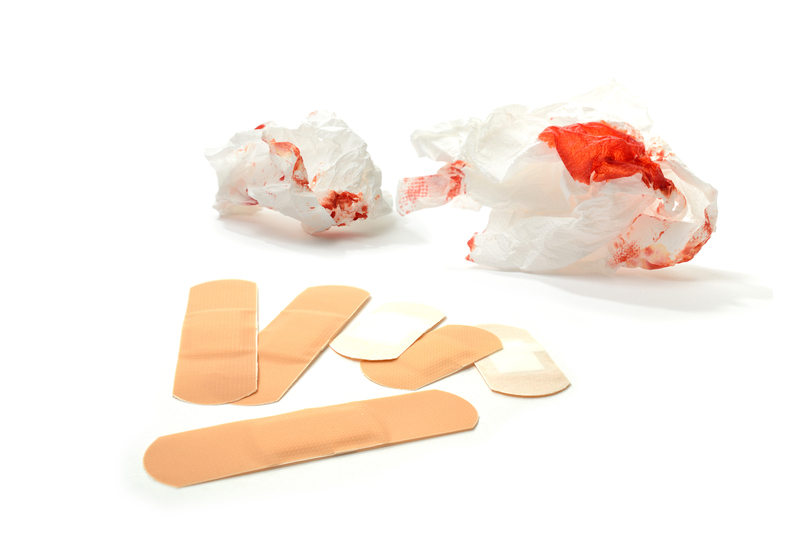Guidelines for Cleaning Using Bleach
Posted on 19/02/2025
Cleaning with bleach is a common household task, but it's important to use it safely and effectively to protect your health and your home's surfaces. This comprehensive guide covers the essential aspects of cleaning with bleach, including safety precautions, proper mixing, and application techniques.
Understanding Bleach
Bleach is a powerful disinfectant and whitener commonly used for cleaning and sanitizing surfaces. The primary active ingredient in bleach is sodium hypochlorite, which works by breaking down proteins and microbes. However, because of its strong chemical nature, using bleach improperly can result in damaging surfaces, releasing harmful fumes, and causing skin irritations or respiratory issues.

Safety Precautions
Before you begin cleaning using bleach, it's crucial to follow these safety guidelines:
1. Ventilation: Ensure proper ventilation by opening windows and doors to allow fresh air to circulate. Using fans can also help disperse any fumes.
2. Protective Gear: Wear gloves, preferably rubber ones, to protect your hands from chemical burns and irritation. Wearing goggles and a mask can also prevent accidental splashes to your eyes and inhaling fumes.
3. Dilution: Never use bleach at full strength. Always dilute it with water according to the instructions on the bottle. Usually, a ratio of 1:10 (bleach to water) is sufficient for most cleaning tasks.
4. Avoid Mixing: Never mix bleach with other chemicals, particularly ammonia or vinegar, as this can create dangerous gases.
5. Storage: Keep bleach out of reach of children and pets, and store it in a cool, dry place away from direct sunlight.
Proper Mixing and Application
Correctly mixing and applying bleach is essential for achieving effective cleaning results without damaging surfaces or causing health risks.
1. Dilution Ratio: For general cleaning purposes, you can use a dilution ratio of one tablespoon of bleach per gallon of water. For disinfecting purposes, use 1/3 cup of bleach per gallon of water.
2. Application: Use a sponge, cloth, or spray bottle to apply the diluted bleach solution. Be mindful of the surface you're cleaning, as bleach can damage some materials.
3. Contact Time: Allow the bleach solution to sit on the surface for at least 5-10 minutes to effectively kill germs and bacteria. Always refer to the manufacturer's guidelines for the appropriate contact time.
4. Rinsing: After disinfecting, rinse the surface with plain water, especially on food contact surfaces, to remove any bleach residue.
5. Surface Suitability: Avoid using bleach on metals, such as aluminum and stainless steel, as it can corrode these materials. It's also advisable to patch test bleach on surfaces like colored fabrics or painted walls to ensure there's no discoloration or damage.
Bleach-Compatible Surfaces
Bleach can be safely used on a variety of surfaces, but it's not suitable for all. Here are some surfaces where bleach is effective, and those where it should be avoided.
- Suitable: Porcelain, ceramic tiles, grout, plastic, and fiberglass.
- Unsuitable: Wood, metal, granite, marble, natural stones, and some fabrics.
Tips for Effective Cleaning
1. Measure Accurately: Always measure bleach and water accurately to ensure the correct dilution ratio.
2. Label Solutions: Label any bleach solutions clearly to prevent accidental misuse.
3. Maintain Freshness: Use freshly made solutions, as bleach loses its effectiveness over time.
4. Wipe Down First: Clean the surface with soap and water before disinfecting with bleach to remove any dirt and grime.
Pros and Cons of Cleaning with Bleach
Pros:
- Effective Disinfectant: Kills bacteria, viruses, and fungi effectively.
- Whitening Capability: Excellent for removing stains and whitening surfaces.
- Versatile Use: Can be used for a variety of cleaning tasks.
Cons:
- Health Risks: Can cause respiratory issues and skin irritation.
- Surface Damage: May damage certain materials, including metals and colored fabrics.
- Toxic Fumes: Potentially hazardous if mixed with other chemicals.

Takeaways
- Always follow safety precautions, including proper ventilation and wearing protective gear.
- Dilute bleach correctly to avoid damaging surfaces and ensure effective cleaning.
- Only use bleach on suitable surfaces to prevent unintended damage.
- Follow label instructions and guidelines for the best result.
Conclusion
Using bleach for cleaning can be highly effective when done correctly. By adhering to these guidelines for dilution, application, and safety, you can clean and disinfect your living space while minimizing health risks and potential damage to surfaces. Always remember to take appropriate precautions, and keep bleach out of reach of children and pets. With the right approach, bleach can be a powerful ally in maintaining a clean and hygienic home.




